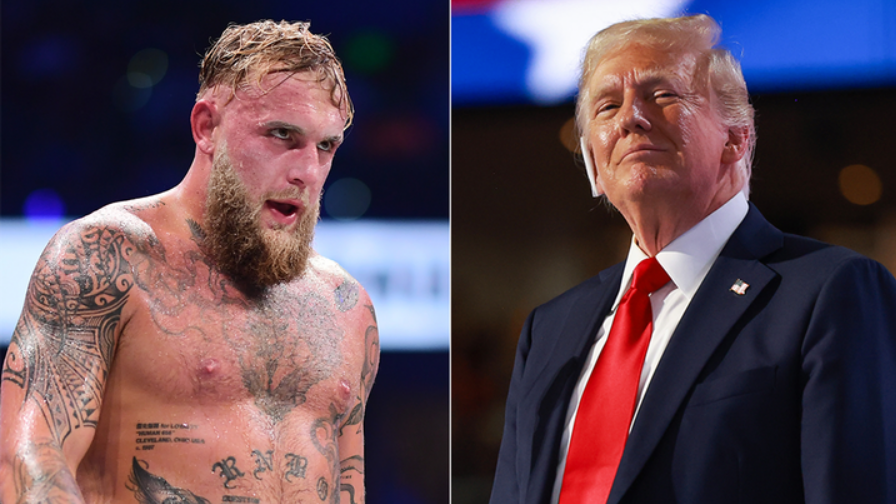Politics
Opposition concedes that Newsom likely to eke out a win on Proposition 1 in California
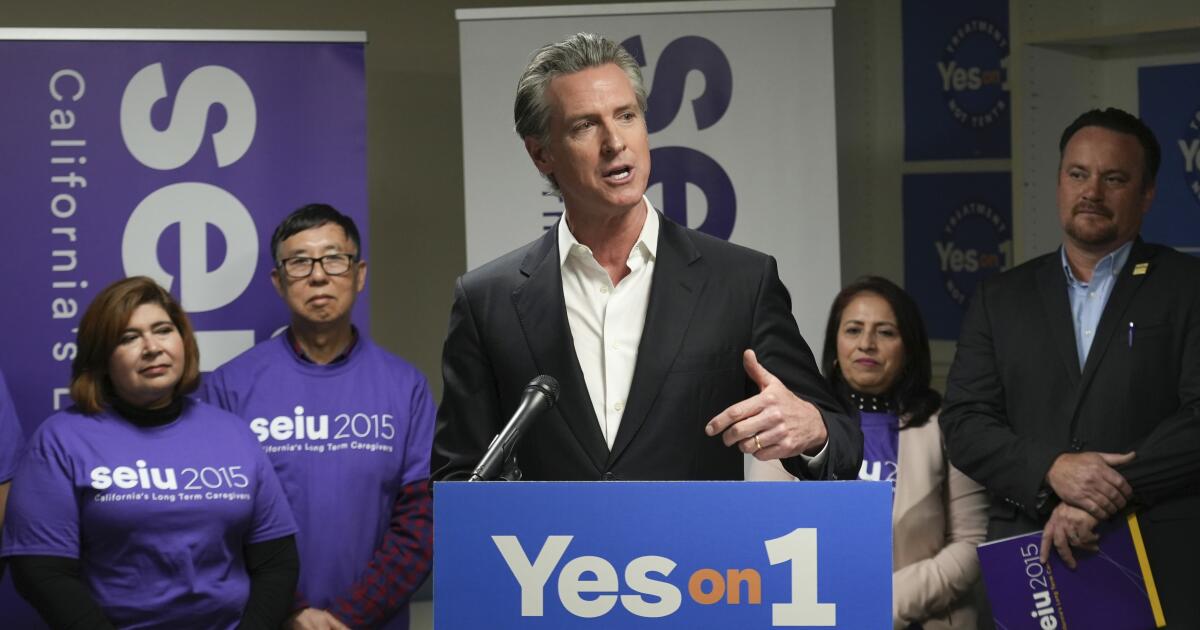
Gov. Gavin Newsom brimmed with confidence about Proposition 1 in January as he sat in a Costa Mesa Motel 6 room that was converted into housing for homeless veterans.
“I think it’s going to win overwhelmingly,” the governor said in an interview with The Times. “Period. Full stop.”
Nearly two months later, Newsom’s cockiness appears misplaced.
Despite millions spent by his campaign, Newsom’s ballot proposal to increase care for drug addiction and fund more treatment beds has held only a narrow lead since the March 5 primary. Still too close to officially call more than a week after the election, preliminary tallies from the California secretary of state showed Proposition 1 ahead by less than a percentage point.
Even with that uncertainty, the meagerly funded opposition campaign conceded Tuesday morning that the measure was “almost certain” to pass.
“We almost took down the bear, but it looks like we will fall short,” the Californians Against Prop 1 campaign said in a statement.
Newsom’s campaign said it was “optimistic” about the outcome, but there are still ballots to be tallied. More than 1.5 million ballots remain uncounted statewide in an election expected to exceed 7.5 million votes in all, which could be one of the lowest turnouts in state history.
The Associated Press, which member news organizations rely on to read results and call elections, said in a statement that “the race could flip if ‘No’ does just 1.5 percentage points better among the outstanding votes.”
“AP has determined that is too much uncertainty to make a call at this time as results across the state are uneven.”
Pollsters say Proposition 1 — and most Democratic candidates — underperformed on election day because of lower than expected voter turnout that inflated the Republican share of the electorate. Election returns showed inland counties and parts of Southern California opposed the measure, while a majority of voters in Los Angeles and the Bay Area backed the plan.
“It was the angry versus the apathetic,” said Jim DeBoo, a consultant for Proposition 1. “Republicans are angry and they showed up.”
Though Newsom’s proposal received rare bipartisan support from Central Valley Republicans and San Francisco Democrats in the state Legislature, that political harmony didn’t extend to voters. The measure was criticized by civil rights groups on the left who were concerned about the repercussions of funding secure mental health facilities and his GOP opponents on the right who scoffed at the estimated $14-billion price tag amid a massive state budget deficit.
Proposition 1 would approve a new $6.4-billion bond to support 10,000 treatment and housing beds and reconfigure a 20-year-old tax for mental health services to also fund services for drug addiction. The plan is essential to Newsom’s strategy to address California’s homelesness crisis, a persistent obstacle for the state and political vulnerability for the Democratic governor.
Under mounting pressure to clean up encampments and get people into treatment, the governor has adopted a series of policy positions that depart from the liberal model of voluntary treatment to a more moderate approach of compelling people with severe mental illness and substance disorders into care.
Newsom signed a law last year to expand conservatorship to allow courts to appoint someone to make decisions for people struggling with severe substance use disorders. Counties began implementing his CARE Court program, which gives families an opportunity to request that courts require treatment for a loved one, last year.
The lack of treatment beds and places to house an influx of patients has been the primary argument against Newsom’s strategy. In her state of the city address days after the election, San Francisco Mayor London Breed touted that the passage of Proposition 1 would provide “a real opportunity to add hundreds more” treatment beds.
“So when the state opens the pipeline for new beds, San Francisco is ready and first in line,” Breed said.
Civil rights organizations and advocates for the disabled community opposed the measure and raised alarm bells in 2023 over a last-minute change to Proposition 1 that allows counties to use the bond money for “locked facilities,” where patients cannot voluntarily leave.
American Civil Liberties Unions in California and League of Women Voters of California urged voters to reject the measure, arguing that community mental health services are more effective than institutionalization.
“I think the governor and mayors often just want the encampments to disappear by any means necessary,” said Katherine Wolf, a doctoral student in society and environment at UC Berkeley, who said she voted against Proposition 1.
Wolf said she believes that community programs that provide stability to some mentally ill Californians will lose funding if money shifts to involuntary treatment. Similar to the ACLU and League of Women Voters, she also opposes forcing people into care.
“For them to sneak it in at the last minute after promising all summer that the bond would only be used for community-based voluntary unlocked treatment, I think is really underhanded and I think they did it specifically to avoid objections from the groups and people who they knew would object,” Wolf said.
Newsom cast the measure as an opportunity to get more people off the streets and into treatment. The measure, he argued in an interview with The Times, addressed the most important issues to voters — crime, homelessness, substance abuse and mental health — and “90% of the boxes that unite the vast overwhelming majority of Californians.”
Early polls seemed to suggest Newsom was right. A survey conducted by the Public Policy Institute of California in November, for example, suggested that two-thirds of likely voters approved of Proposition 1, 30% opposed and a mere 2% remained undecided.
But despite the governor’s bullish stance publicly, behind the scenes his campaign predicted the final result would end up tighter than polls showed and sought to lower expectations in the months and weeks before the election.
Support dropped to 59% among likely voters in a second PPIC poll conducted in February.
By the end of the month, the measure teetered with only 50% support in a UC Berkeley Institute of Governmental Studies poll co-sponsored by the Los Angeles Times. More than one-third of voters were opposed and 16% remained undecided. A large majority of Republican voters who responded to the Berkeley poll opposed the measure, raising concerns about how Proposition 1 would fare in an election with higher GOP turnout.
In a memo sent days before the election, David Binder, a pollster hired by Newsom’s campaign, suggested the PPIC polling was optimistic given low turnout and underperformance among Democrats.
“It is likely that even as yes-on-Proposition 1 may have polled in the low 60s when first introduced in 2023 that the yes vote could end up in the low 50s, given the history of erosion in support for bond and tax measures and the specifics regarding low turnout and disproportionate Republican turnout that California is experiencing for the March 5th election,” Binder wrote.
Mark DiCamillo, director of the IGS poll, said that despite the bipartisan support at the state Capitol, it should come as no surprise that Republican voters didn’t rally behind Proposition 1.
Republicans tend to oppose big-ticket ballot measures. Voters of all political affiliations who remain undecided in the final days before an election also often end up voting against a measure if their mind isn’t made up, he said. Complicated measures, such as Proposition 1, can easily confuse voters as well.
“One other difference that probably worked against it in this election was that the turnout was so low that you basically have three times as many older voters, who tend to be more conservative than younger voters,” DiCamillo said.
Newsom’s campaign said the governor intentionally chose to place the measure on the March ballot because they believed it could “withstand a more conservative electorate and still pass on election day” and due to the urgency of the issue.
Anthony York, a spokesperson for the campaign, said — and pollsters agreed — that the measure would have performed better if placed on the November ballot where Democratic turnout is projected to be higher.
But Democrats in Sacramento are also eyeing several other bond measures on housing, schools and climate to put before voters in November that could total tens of billions of dollars. With the state struggling to offset a budget deficit of at least $37.9 billion, bonds act as a method of sorts for government to take out loans paid back over time to fund big-ticket policies.
Voting on Proposition 1 in March instead of November was a strategic decision that allowed Newsom to avoid a crowded ballot in the fall, said Paul Mitchell, vice president of Political Data Inc.
“Voters do, if you accumulate ballot measures that have spending, start to kind of collectively go ‘no’ on them,” Mitchell said.
Times staff writer Hannah Wiley contributed to this report.

Politics
Fetterman disses Dems for suddenly embracing Musk amid Trump fallout
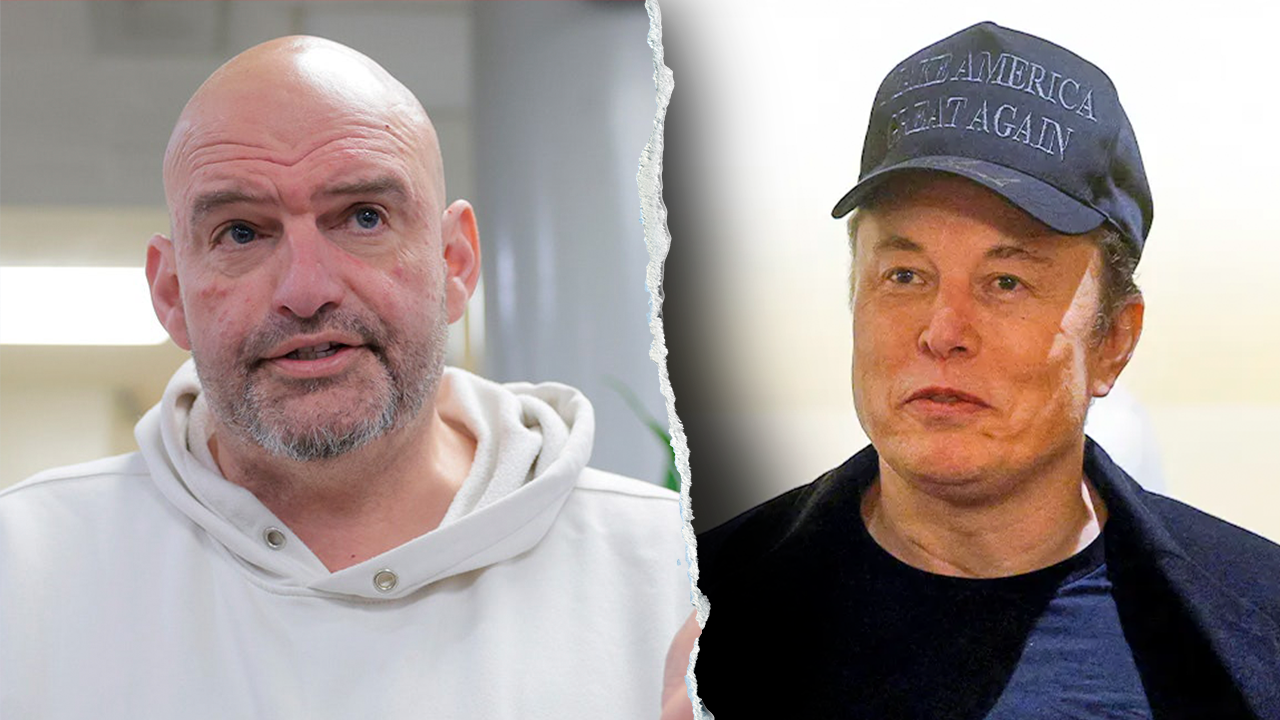
NEWYou can now listen to Fox News articles!
Maverick Democratic Sen. John Fetterman dissed members of his own party Thursday for suddenly backing Elon Musk during his feud with President Donald Trump.
Democrats have found an unlikely ally in Musk this week, given his public rejection of Trump’s “big, beautiful bill” and a subsequent call for Trump’s impeachment.
The president has championed the legislation as fulfilling his key campaign promises, including border security, American energy production and tax cuts.
The megabill is under consideration by both a Republican-led White House and Congress. But it has faced hiccups in the Senate this week as Republicans, including some who helped pass the bill through the House, have indicated they do not support the bill in its current form. Every House Democrat voted against the bill.
ELON MUSK WARPATH AGAINST TRUMP’S ‘BIG, BEAUTIFUL BILL’ RATTLES HOUSE GOP
Sen. John Fetterman, D-Pa., (left) said Democrats should make up their minds about Elon Musk. (Reuters; Getty Images)
The national debt is at $36,214,501,400,213.64 as of June 5, according to the latest numbers published by the Treasury Department.
GOP SENATORS EXPRESS ‘CONCERNS,’ ‘SKEPTICISM’ OVER TRUMP’S SPENDING BILL AFTER MUSK RANT
Amid the setbacks, Musk has thrown a wrench into the Republican’s reconciliation process through a series of fiery posts on X, the platform he bought in 2022. And Democrats were quick to coalesce behind Musk’s rejection of the bill, seizing on the GOP’s intraparty conflict despite their outright rejection of Musk and his Department of Government Efficiency (DOGE) this year.
In the first of several posts targeting the bill, and then Trump directly, Musk said, “I’m sorry, but I just can’t stand it anymore. This massive, outrageous, pork-filled Congressional spending bill is a disgusting abomination. Shame on those who voted for it: you know you did wrong. You know it.”
Fetterman, who has built a reputation for bucking his own party on issues like immigration and support for Israel, was quick to call out the inconsistency of his fellow Democrats Thursday.
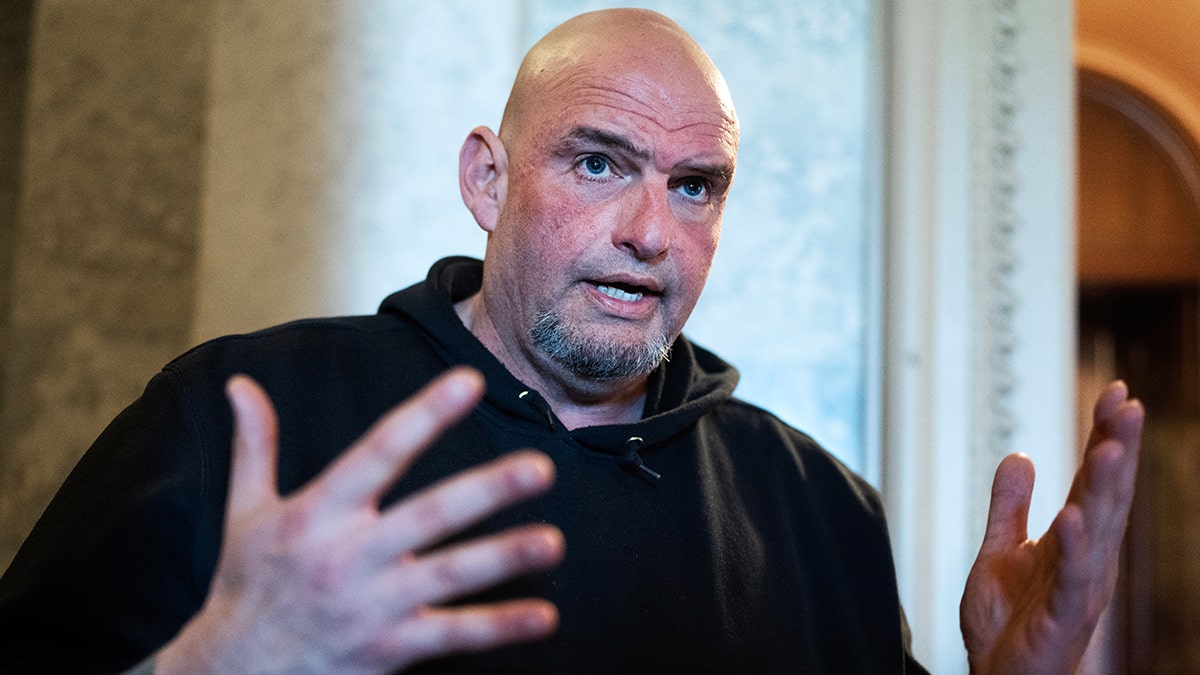
Sen. John Fetterman, D-Pa., talks with a reporter after a Senate luncheon at the U.S. Capitol March 11, 2025. (Tom Williams/CQ-Roll Call, Inc via Getty Images)
“The Dems, we’ve been dumping all over Musk and vandalizing Teslas or whatever, and now, suddenly, we might be more back into him,” Fetterman said.
Democrats began staging protests at Tesla dealerships early into Trump’s second term. Tesla vehicles and dealerships have also been targeted this year in a string of violent attacks against the company, another business owned by Musk. Trump’s Justice Department labeled the attacks “domestic terrorism.”
And while the Pennsylvania Democrat said Musk is right for rejecting Trump’s megabill, Fetterman said Thursday Democrats have to decide what they think of Musk and stick with it.
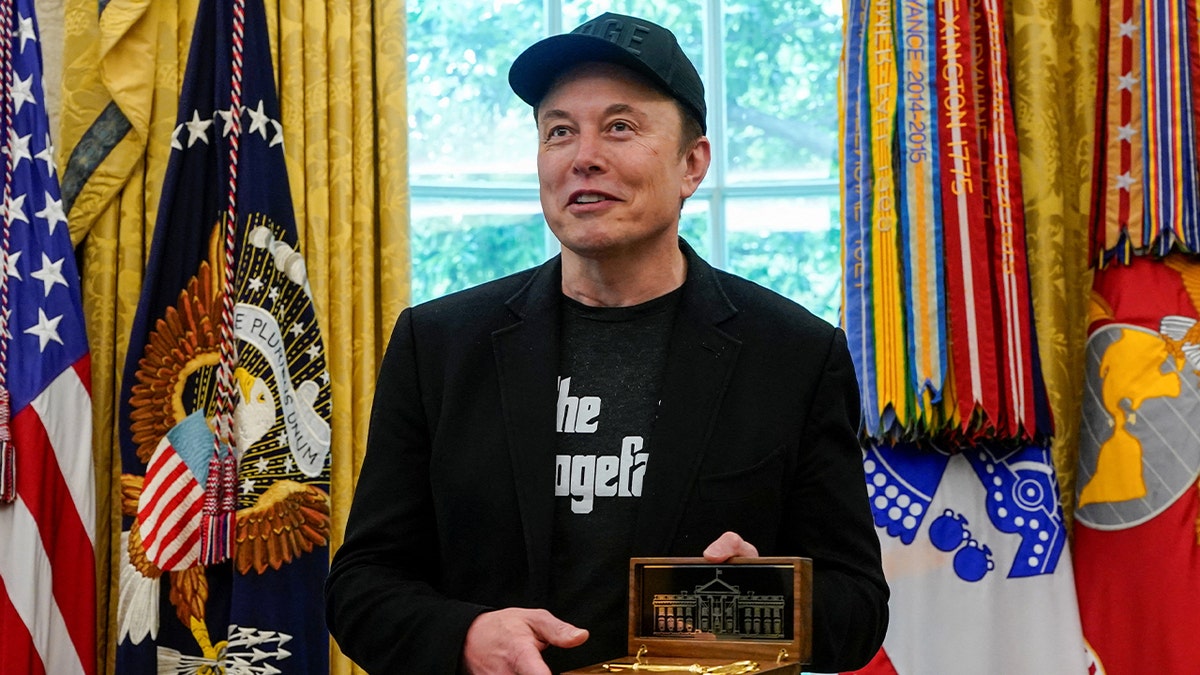
Elon Musk holds the key to the White House, a gift he received from President Donald Trump, at a press conference in the Oval Office at the White House in Washington, D.C., May 30, 2025. (Reuters/Nathan Howard)
“It wasn’t that long ago that Tesla was like the virtue-signaling kind of accessory for Dems,” Fetterman said. “I would never want to vandalize Teslas, and the ‘big, beautiful bill’ is wrong for America. So, from my perspective, I’ve just tried to be consistent through that.”
Rep. Ro Khanna, D-Calif., was one Democrat who acknowledged this week that Democrats should work with Musk on their shared objective to stop Trump’s “big, beautiful bill.”
And GOP Rep. Tim Burchett piled on the criticism of Democrats’ inconsistencies, telling Fox News Digital, “It’s kind of ironic to me that, a week ago, the Democrats hated Elon Musk’s guts … and now they’re basing everything they have on him.”
Fox News Channel’s Chad Pergram and Fox News Media’s Dan Scully contributed to this report.
Politics
Supreme Court rules discrimination laws protect all equally, including 'majority group' members

WASHINGTON — The Supreme Court ruled Thursday that the nation’s anti-discrimination laws apply equally to all employees, regardless of whether those complaining of bias are white or Black, gay or straight.
In a short and unanimous opinion, the justices rejected as outdated and mistaken the view that “members of a majority group” must show more evidence of discrimination before they can sue and win.
Instead, the justices said the Civil Rights Act of 1964 has always prohibited workplace discrimination against “any individual” who suffers discrimination because of race, color, religion, national origin and sex, including sexual orientation.
The law “draws no distinctions between majority-group plaintiffs and minority-group plaintiffs,” Justice Ketanji Brown Jackson said.
The ruling revives a discrimination lawsuit brought by Marlean Ames, an Ohio woman who said she was demoted and discriminated against by a lesbian who became her supervisor. She was then replaced by a gay man who had less experience.
Ames is a heterosexual woman. She sued her employer, the Ohio Department of Youth Services, and alleged she was discriminated against because of her sexual orientation.
But a federal judge rejected her discrimination claim, and the 6th Circuit Court in Cincinnati affirmed that decision. In doing so, the judges said she could not point to “background circumstances” or statistical evidence suggesting that hers was the “unusual employer who discriminates against the majority.”
Law students at the University of Virginia Law School appealed her case to the Supreme Court. They pointed out that the 6th Circuit and several other courts continue to use an outdated, two-track approach to discrimination claims.
This is not the standard in much of the nation, however. For example, they said the 9th Circuit Court based in California does not follow this approach, which would require more proof of discrimination from whites or men or heterosexuals.
But the law students said the court should hear the Ames case and clarify the law nationwide.
Although the case did not directly involve DEI, or diversity, equity and inclusion, it gained added attention because of President Trump’s drive to rid the government of DEI policies.
Jackson said the Supreme Court for more than 50 years has steadily rejected the view that discrimination laws apply differently to different groups of people.
In Griggs vs. Duke Power in 1971, “we said that ‘[d]iscriminatory preference for any group, minority or majority, is precisely and only what Congress has proscribed.’”
A few years later, the court rejected the two-track approach, she said, “holding that Title VII [of the Civil Rights Act] prohibited racial discrimination against the white petitioners in th[at] case upon the same standards as would be applicable were they Negroes.”
Lawyers for the Biden and Trump administrations had urged the court to overrule the 6th Circuit and make clear there is no double standard for deciding discrimination claims
In a concurring opinion, Justice Clarence Thomas noted the “majority” in the workplace differs by workplace.
“Women make up the majority of employees in certain industries, such as teaching and nursing, but the minority in other industries, such as construction.”
“Defining the ‘majority’ is even more difficult in the context of race,” he wrote. “American families have become increasingly multicultural, and attempts to divide us all up into a handful of groups have become only more incoherent with time.”
The court’s ruling in Ames vs. Ohio Department of Youth Services said the Ohio court should reopen and reconsider Ames’ claim of discrimination.
Experts in discrimination law said the decision will have an effect in some regions but not others.
“As a practical matter, more ‘reverse discrimination’ lawsuits may survive a motion to dismiss,” said Evan Parness, an attorney at the Covington law firm in New York.
Although the decision doesn’t significantly change how federal district courts in California operate, it has implications for some courts in other parts of the country that require the higher burden of proof, said Elizabeth Beske, professor of law at American University in Washington.
The “background circumstances” rule was first applied in D.C. courts, after a white man sued the Baltimore and Ohio railroad company arguing he was discriminated against when jobs were instead given to Black and female applicants. The court held that “it defie[d] common sense to suggest that the promotion of a Black employee justifies an inference of prejudice against white co-workers in our present society.”
Columbia Law professor Olatunde C. Johnson said the “opinion is not surprising. It depends on a straightforward and sensible statutory reading of Title VII. The 6th Circuit’s ‘background circumstances’ approach was not typical, so I don’t expect the case to dramatically change employment discrimination litigation on the ground.”
Brian McGinnis, an attorney with the firm Fox Rothschild, said because the decision was unanimous, which is rare, it shows an uncontroversial and “pretty straightforward” perspective that there is no historical basis in case law for requiring extra proof from white, heterosexual or other majority groups.
And it represents an effort by the court to streamline and eliminate the need for additional steps in litigation, he said.
There is some question as to how the change is applied, but McGinnis doesn’t expect any issues.
“There is some potential for mischief, but I don’t think it will have much change on the day-to-day operations of many employers or courts,” McGinnis said. “The short answer is, it should not change much.”
Savage reported from Washington and Hussain from Los Angeles.
Politics
See the Countries Under Trump’s New Travel Ban: List, Map and Charts

President Trump has targeted the citizens of a dozen countries as part of a new ban on travel to the United States and restricted travel for those from several more countries.
The restrictions touch more parts of the world and could affect more people than similar travel bans that were introduced during the first Trump administration.
All travelers who are citizens of countries in the first tier will be barred entry, while certain types of visas will be suspended for those countries in the second tier.
Shortly after he first took office in 2017, Mr. Trump tried to bar travelers from seven mostly Muslim-majority countries. Five of those countries are on the new list, plus several more countries in Africa, Asia and the Middle East, as well as Cuba, Haiti and Venezuela.
Mr. Trump’s order says the new travel ban does not apply to people with visas who are already in the United States, and it contains a few other exceptions. For example, Afghans eligible for the Special Immigrant Visa program, which is for those who helped the U.S. government during the war in Afghanistan, are excepted from the ban.
How many people come to the U.S. from these countries?
Last year, the State Department issued about 170,000 total visas to the 12 countries on the ban list. For most countries, the vast majority of those were nonimmigrant visitor visas for tourism, business or study. But for Afghans, Yemenis and Somalians, most were immigrant visas, typically allocated to immediate relatives of U.S. citizens or to skilled workers who are sponsored by their employers.
Visas previously issued to countries now on the travel ban list
Permanent immigrant and temporary nonimmigrant visas issued in 2024
What happened under the previous travel bans?
The introduction of the 2017 travel ban led to immediate chaos and confusion as hundreds of travelers were detained at airports across the country and more than 60,000 visas were provisionally revoked. Federal judges blocked the ban within a week.
Overall, travel from the countries banned in 2017 was relatively low to begin with, though people from Iran and Syria had arrived in the thousands each month. A back-and-forth in the courts delayed implementation, and then the Covid pandemic hit, halting travel globally.
But after January 2021, when President Biden lifted the bans, travel from many of those countries, most notably Iran, more than rebounded.
Travel to the U.S. from countries barred under 2017 travel ban
International visitor arrivals by country of citizenship
Mr. Trump ended up issuing four travel bans in his first term, with each version modifying its predecessor in order to pass legal scrutiny. It was almost a year before any ban actually took effect.
Here is a look back at the evolution of the travel bans under the first Trump administration from 2017 through 2020:
Jan. 27, 2017
First travel ban introduced. Entry into the U.S. is barred for people from Iran, Iraq, Libya, Somalia, Sudan, Syria and Yemen for 90 days.
Feb. 3, 2017
A federal judge temporarily blocks the ban in Washington v. Trump.
Mar. 6, 2017
Second travel ban introduced. Iraq is removed from the list. The ban also exempts those with an existing green card or valid visa.
Mar. 15, 2017
Sept. 24, 2017
Third travel ban introduced. Entry is barred for most citizens of Chad, Iran, Libya, North Korea, Somalia, Syria, Venezuela and Yemen. Iranian nationals with valid student and exchange visitor visas are allowed entry. Several parties sue to block the ban.
Dec. 4, 2017
The Supreme Court allows the third ban to take effect while legal challenges against it continue.
April 10, 2018
Travel restrictions on Chad are removed after the country satisfies the administration’s security concerns.
June 26, 2018
Jan. 31, 2020
Fourth travel ban introduced. Immigrants from Eritrea, Kyrgyzstan, Myanmar, Nigeria, Sudan and Tanzania are barred from entering the United States, but tourists and others entering on a temporary basis are not.
Jan. 20, 2021
President Biden takes office and immediately revokes all of the Trump travel bans.
-

 Politics1 week ago
Politics1 week agoTrump admin asking federal agencies to cancel remaining Harvard contracts
-

 Culture1 week ago
Culture1 week agoCan You Match These Canadian Novels to Their Locations?
-

 Technology1 week ago
Technology1 week agoThe Browser Company explains why it stopped developing Arc
-

 News1 week ago
News1 week agoHarvard's president speaks out against Trump. And, an analysis of DEI job losses
-

 News1 week ago
News1 week agoRead the Trump Administration Letter About Harvard Contracts
-

 News7 days ago
News7 days agoVideo: Faizan Zaki Wins Spelling Bee
-

 World1 week ago
World1 week agoDrone war, ground offensive continue despite new Russia-Ukraine peace push
-

 Politics5 days ago
Politics5 days agoMichelle Obama facing backlash over claim about women's reproductive health




